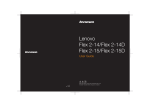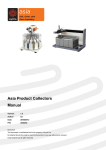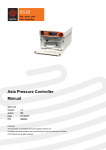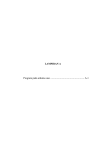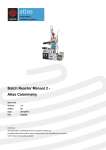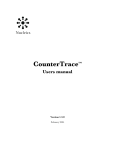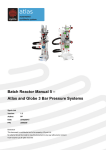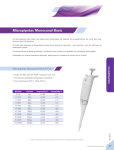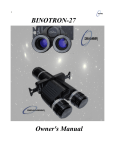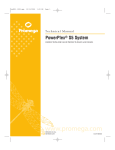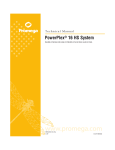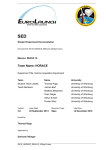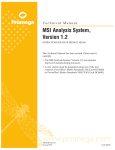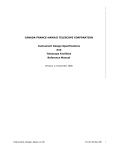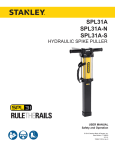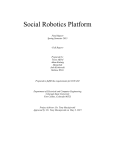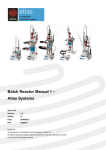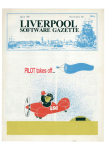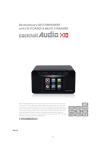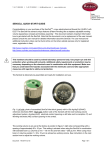Download pdf
Transcript
Asia Syringe Pump Manual Syrris Ltd Version: 1.4 Author: PP Date: 03/11/15 P/N: 2000247 Disclosure This document is confidential and is the property of Syrris Ltd. No attempt should be made to copy this document in any way without prior consent. © 2012 Syrris Ltd all rights reserved Contents 1 Introduction .........................................................................................................................................................5 2 Safety ...................................................................................................................................................................6 3 Overview of the Asia Syringe Pump .................................................................................................................9 3.1 Overview of the Asia Pump ..........................................................................................................................9 3.2 Module Overview ........................................................................................................................................10 3.3 Asia Pump Specifications ...........................................................................................................................12 3.3.1 Enhanced Specification (With Upgrades) ...........................................................................................13 3.4 Asia Syringes ..............................................................................................................................................14 3.5 Asia Pressure Sensor .................................................................................................................................14 3.6 Asia Valve ...................................................................................................................................................15 3.7 Control and Datalogging overview ..............................................................................................................16 3.7.1 Manual Control from the front .............................................................................................................16 3.7.2 Datalogging Overview .........................................................................................................................17 4 Quick Start Guide..............................................................................................................................................18 5 Using the Asia Pump ........................................................................................................................................19 5.1 Setup ...........................................................................................................................................................19 5.1.1 Switching on and initializing the Asia Pump .......................................................................................19 5.1.2 Connecting the fluidic lines to the Asia Pump ....................................................................................20 5.2 Module Controls ..........................................................................................................................................21 5.2.1 The Home Screen ...............................................................................................................................22 5.2.2 Setting Flow Rates ..............................................................................................................................22 5.2.3 Stopping the pump ..............................................................................................................................23 5.3 Pump Channel Options ...............................................................................................................................24 5.3.1 Initialise ...............................................................................................................................................24 5.3.2 Stop .....................................................................................................................................................24 5.3.3 Fill Flow Rate ......................................................................................................................................24 5.3.4 Fill........................................................................................................................................................25 5.3.5 Empty ..................................................................................................................................................25 5.3.6 Syringe Volume...................................................................................................................................26 5.3.7 Maximum Pressure .............................................................................................................................27 5.3.8 Over Pressure .....................................................................................................................................27 5.3.9 Zero Pressure .....................................................................................................................................28 5.3.10 Leak Test ............................................................................................................................................28 Syrris Ltd: Asia Syringe Pump - Manual Chapter: Introduction Page 2 of 48 5.4 5.4.1 Manual Mode ......................................................................................................................................28 5.4.2 Detected Hardware .............................................................................................................................29 5.4.3 Set the Date and Time ........................................................................................................................29 5.4.4 Screensaver ........................................................................................................................................30 5.5 6 Menu Options ..............................................................................................................................................28 Logs ............................................................................................................................................................31 5.5.1 Looking at the logs on the pump.........................................................................................................31 5.5.2 Exporting logs .....................................................................................................................................31 Maintenance ......................................................................................................................................................33 6.1 Cleaning the Asia Pump .............................................................................................................................33 Cleaning the syringes .........................................................................................................................................33 6.1.1 Cleaning external surfaces .................................................................................................................33 6.2 Removing/Replacing Syringes ....................................................................................................................34 6.3 Removing/Replacing Pressure Sensors and Valves ..................................................................................37 6.4 Updating the Asia Pump firmware ..............................................................................................................38 6.5 Disconnecting the main power lead ............................................................................................................39 6.6 Changing the fuse .......................................................................................................................................39 7 Support ..............................................................................................................................................................40 8 List of Parts .......................................................................................................................................................41 9 Appendix ............................................................................................................................................................42 9.1 Appendix 1: How to fit connectors on the tubing ........................................................................................42 9.2 Appendix 2: Syringe care instruction ..........................................................................................................43 9.3 Appendix 3: Software Tree .........................................................................................................................45 9.4 EC Declaration of Conformity .....................................................................................................................46 9.5 Certificate of Decontamination ....................................................................................................................47 Syrris Ltd: Asia Syringe Pump - Manual Chapter: Introduction Page 3 of 48 [Page left blank] Syrris Ltd: Asia Syringe Pump - Manual Chapter: Introduction Page 4 of 48 1 Introduction Thank you for purchasing an Asia Syringe Pump from Syrris. These instructions have been carefully prepared to guide the installer and end-user through the installation and use of the Asia Syringe Pump. Before attempting to use this product, please read this manual thoroughly and follow the instructions carefully. In doing so you will ensure the safety of yourself and that of others around you, and you can look forward to your purchase giving you long and satisfactory service. Please keep the manual easily accessible and in immediate vicinity of the module. Only suitably qualified and trained personnel should operate this unit. Syrris Ltd: Asia Syringe Pump - Manual Chapter: Introduction Page 5 of 48 2 Safety Warning and safety information This equipment should only be used by competent, suitably trained personnel after they have read and understood this manual, and considered any hazard involved. Protection provided by the equipment may be impaired if installed or operated in a manner other than that specified by the manufacturer. Place the instruments on a solid horizontal fire proof surface. Ensure the area around the unit is clear to ensure that any ventilation openings are not obstructed. Adequate protection including appropriate PPE and ventilation must be provided if hazardous chemicals are to be used in conjunction with this unit. In the case of accidental spillage, carefully wipe with a dry cloth, taking into account the nature of the spilled liquid and the necessary safety precautions. Comply with all safety and accident prevention regulations applicable to laboratory work. Always connect the instruments to an earthed ac power outlet. The operating voltage is indicated on the specification sticker. Non observance of this provision may result in damage to the Asia Pump or in personal injury or damage to property. Do not use a replacement mains supply cord that is inadequately rated for this piece of equipment. The ratings for this piece of equipment can be found in section 3.3. This product does not comply with the ATEX directive and must not be used in explosive atmospheres. Syrris Ltd: Asia Syringe Pump - Manual Chapter: Safety Page 6 of 48 Only use the labelled input bottles supplied with the system. These have been pressure tested and coated. If the bottles are scratched or damaged do not use. The system may be pressurised up to 25 bar. Always use appropriate personal protective equipment including eye protection. The automated collectors can move without warning. Do not obstruct the deck area when the collectors are switched on. Cleaning Cleaning should only be performed by personnel trained in such work, and who are aware of the possible dangers involved. Asia (and all the associated hardware) has not been designed for sterilisation or use with an autoclave. Static discharge To avoid the build-up of static within the unit, which could provide a source of ignition, the Asia pump is fitted with an earth bonding point (indicated on the rear of the unit). This earth bonding should be checked to ensure that static build-up is not possible as part of a risk assessment. Maintenance Maintenance should only be attempted by qualified service personnel or under guidance by Syrris. The Asia system may contain hot components – please allow the unit to cool before performing any maintenance operations. The on/off switch must be switched to OFF and the unit disconnected from both mains and any attached apparatus whenever maintenance is performed. Opening any module may invalidate the warranty. Returning Equipment Equipment which has been contaminated with, or exposed to, body fluids, toxic chemicals or any other substance hazardous to health must be decontaminated before it is returned to Syrris or its distributor. A decontamination certificate is included in this manual. Syrris Ltd: Asia Syringe Pump - Manual Chapter: Safety Page 7 of 48 Environmental Conditions For indoor use only Temperature range: 5°C to 40°C Humidity: Maximum relative humidity of 80% Waste Electrical and Electronic Equipment (WEEE) statement Syrris is compliant with the EU directive on waste electrical and electronic equipment (WEEE) please refer to www.syrris.com for directions and information on end-of-life policy. Syrris Ltd: Asia Syringe Pump - Manual Chapter: Safety Page 8 of 48 3 Overview of the Asia Syringe Pump 3.1 Overview of the Asia Pump Designed specifically for flow chemistry, the compact Asia Pump offers two independent flow channels each with an integrated pressure sensor and a flow rate range from 1.0μl to 10ml/min. Each pump channel provides a continuous and accurate flow using a system called “V/2V pumping”. “V/2V” refers to the volumes of the two syringes used in this pumping system, one being twice the volume of the other. The “V/2V2 pumping” consists of two phases: Phase 1 Phase 2 Figure 1 In the first phase, the left syringe fills directly from the bottle. At the same time the right syringe dispenses a volume V in the fluidic system In the second phase, the left syringe dispenses a volume 2V – half of it (V) is used to fill the right syringe and the other half (V) is dispensed in the fluidic system. By alternating between those two phases, the Asia Pump ensures a continuous stream of solution with low pulsation and accurate flow rate. Syrris Ltd: Asia Syringe Pump - Manual Chapter: Overview of the Asia Syringe Pump Page 9 of 48 3.2 Module Overview Display screen Control knob Cancel button Valve Pressure sensor Input Syringe Output Drive Pump Channel 1 Pump Channel 2 This image shows the front of the Asia Pump module. Figure 2 USB B Socket x 1 USB A Socket x 2 ON/OFF switch Power socket Information label Ventilation fan Vents This image shows the rear of the Asia Pump module. Figure 3 Syrris Ltd: Asia Syringe Pump - Manual Chapter: Overview of the Asia Syringe Pump Page 10 of 48 NOTE: Figure 3, the rear image of the Asia Syringe Pump, shows the latest version of the module. Asia Syringe Pumps manufactured before October 2012 will not have the ventilation fan or vents. This does not affect pump performances and use. NOTE: The instructions in this user manual are valid for all versions of the Asia Syringe Pump. Syrris Ltd: Asia Syringe Pump - Manual Chapter: Overview of the Asia Syringe Pump Page 11 of 48 3.3 Asia Pump Specifications Continuous pump channels 2 Total flow rate range per channel 1μl to 10ml/min (depending on the syringe type) With Asia yellow syringes (50μl/100μl) 1μl to 250μl/min With Asia green syringes (250μl/500μl) 5μl to 1.25ml/min With Asia blue syringes (500μl/1ml) 10μl to 2.5ml/min With Asia red syringes (2.5ml/5.0ml) 50μl to 10ml/min† 0 – 20 bar Operating pressure Pressure sensors Display to 0.1bar Syringe wetted materials Glass and PTFE Valve and pressure sensor wetted materials Outer materials PTFE, PCTFE and Hastelloy Aluminium, Stainless Steel and Polyurethane (sprayed white with highly chemically resistant epoxy paint) Active parts Anodized red Dimensions (H) 260mm x (W) 160mm x (D) 265mm Display 26 x 88mm LED display Voltage input 100V to 240V AC, 50/60Hz Current rating 0.6A †Asia Red Syringes cannot be used at pressures greater than 10 bar. NOTICE: Liquids pumped through the Asia Syringe Pump must only be within the temperature range of 15- 40°C Syrris Ltd: Asia Syringe Pump - Manual Chapter: Overview of the Asia Syringe Pump Page 12 of 48 3.3.1 Enhanced Specification (With Upgrades) Modes of operation PC control via Asia Manager PC software Syrris Ltd: Asia Syringe Pump - Manual Chapter: Overview of the Asia Syringe Pump Page 13 of 48 3.4 Asia Syringes The Asia Pump can be used with four different types of syringe pairs. The four different types of syringes are colour coded: yellow, green, blue and red, with each coloured pair allowing a different flow rate range. Each colour coded pair of syringes has one syringe twice the volume of the other (e.g. a pair of yellow syringes has 1 x 50μl syringe and 1 x 100ml syringe). The bigger volume syringe is labelled “L” and needs to be fitted on the left thread of the Asia Valve. The smaller volume syringe is labelled “R” and needs to be fitted on the right thread of the Asia Valve. Syringes Part No. Flow Rate Range Asia Yellow Syringes (50μl / 100μl) 2200391 1.0μl - 250μl / min Asia Green Syringes (250μl / 500μl) 2200392 5.0μl – 1.25ml / min Asia Blue Syringes (500μl / 1.0ml) 2200393 10μl – 2.5ml / min Asia Red Syringes (2.5ml / 5.0ml) 2200394 50μl – 10ml / min Figure 4 NOTE: Each of the two pumps on an Asia Syringe Pump module can accept different colour pairs, e.g. the left hand pump can have a pair of green syringes (1 x 2200392) and the right hand pump can have a pair of red syringes (1 x 2200394) fitted. 3.5 Asia Pressure Sensor The Asia Pump features two Pressure Sensors, one for each pump channel. Each Asia Pressure Sensor measures the pressure of the stream flowing through. Syrris Ltd: Asia Syringe Pump - Manual Chapter: Overview of the Asia Syringe Pump Page 14 of 48 Thumb Screws Fluidic Output PTFE Seal Front of Pressure Back of Pressure Sensor Sensor Figure 5 3.6 Asia Valve Each pump channel uses a 2-way valve made entirely from PCTFE to ensure maximum chemical compatibility. Side of Asia Valve Asia Valve from Above Fluidic Input Seal Thread for Thread for Thread for Thread for Left Syringe Right Syringe Left Syringe Right Syringe Figure 6 NOTE: The images of the Asia Valve show the latest version of the valve. Asia Valves manufactured before October 2012 will not have metallic helicoils. This doesn’t affect the valve performance and use. The instructions described in this user manual are valid for all valves. Syrris Ltd: Asia Syringe Pump - Manual Chapter: Overview of the Asia Syringe Pump Page 15 of 48 3.7 Control and Datalogging overview 3.7.1 Manual Control from the front The Asia Pump is controlled by a twist and click control knob. On the home screen, press the control knob to select the pump channel you wish to control then turn it to edit the flow rate value. LCD display shows the home screen where flow rate Push the control knob to can be defined for each pump channel independently. select/validate entry Turn the control knob to dial Cancel button value or navigate menu options Figure 7 Further instructions on using the Asia Pump are available in this manual (See Section 5). Syrris Ltd: Asia Syringe Pump - Manual Chapter: Overview of the Asia Syringe Pump Page 16 of 48 3.7.2 Datalogging Overview The Asia Pump automatically records flow rate and pressure data and store them in log files. It also logs all the pump actions. The log files can be viewed either on the Asia Pump (see section 5.5.1 Looking at the logs on the pump) or exported to a .csv file (see Figure 8) using a USB stick (see section 5.5.2 Exporting logs). Figure 8 NOTE: the log files will often be requested by Syrris Support team if you contact them to report an issue. Syrris Ltd: Asia Syringe Pump - Manual Chapter: Overview of the Asia Syringe Pump Page 17 of 48 4 Quick Start Guide 1. Connect the Asia Syringe Pump to an electricity source and switch on. (See Section 5.1.1 Switching on and initializing the Asia Pump). Wait for the initialization to finish. The home screen will then appear. 2. Calibrate both Pressure Sensors (See Section 5.3.9 Zero Pressure). 3. Check that the correct syringe size is specified for each pump channel (See Section 5.3.6 Syringe Volume). 4. Connect the pump channels inputs to the solvent bottles (See Section 5.1.2 Connecting the fluidic lines to the Asia Pump) using suitable pipes (supplied in the case of an Asia System). 5. Connect the pump channels outputs on the pressure sensors to the rest of the fluidic system (See Section 5.1.2 Connecting the fluidic lines to the Asia Pump) using suitable pipes (supplied in the case of an Asia System). 6. When ready to begin the experiment, select the pump channel flow rate you wish to modify by turning the control knob, press the control knob to validate the selection then turn the control knob to dial the flow rate and finally press the control knob again to validate the entry (See Section 5.2.2 Setting Flow Rates). 7. To stop the pump, press the ‘Cancel’ button. Syrris Ltd: Asia Syringe Pump - Manual Chapter: Quick Start Guide Page 18 of 48 5 Using the Asia Pump 5.1 Setup 5.1.1 Switching on and initializing the Asia Pump 1. Plug the power lead into the 3-pin power socket at the back of the Asia Pump. (Figure 9). 1. Press the ON/OFF switch at the back of the module. 2. A series of welcome and initialization screens will appear on the LCD display. During initialization, the syringe drives will move until they reach Figure 9 their top position. This process can take several minutes. 3. After the initialization process is complete, the Home Screen appears (Figure 10). 4. The Asia Pump is now to ready to use. Figure 10 NOTE: If the syringes still contain solvent or reagents from previous experiments, make sure the outputs of both pump channels are connected to waste in order to collect the liquid pushed out during the initialization process. NOTICE: The module requires a stable 100V to 240V AC 50/60Hz power source. Syrris Ltd: Asia Syringe Pump - Manual Chapter: Using the Asia Pump Page 19 of 48 5.1.2 Connecting the fluidic lines to the Asia Pump The pump needs to be located at the start of the fluidic set-up. Each pump channel has one input (on the Asia Valve) and one output (on the Asia Pressure Sensor). Input Output Pump channel 1 of the Asia Syringe Pump Figure 11 The connections to the pump input and output are made via ¼-28’’ connectors (see Figure 12). The Asia Pump is supplied with 1.0mm ID tubing for the input and 0.5mm ID tubing for the output. See section 9 Appendix 1: How to fit connectors on the tubing for how to fit the ¼-28 connector on tubing. Figure 12 To connect the pump to the fluidic system: 1. Connect the input on the Asia Valve to the solvent (or reagent) bottle. The tubing must be well-immersed in the solution which will be pumped. 2. Connect the output on the Asia Pressure Sensor to the rest of the fluidic system. Syrris Ltd: Asia Syringe Pump - Manual Chapter: Using the Asia Pump Page 20 of 48 NOTICE: All fittings should be tightened by hand. Do not use tools such as grippers, pliers or others as this will damage the valve and the pressure sensor. NOTICE: Place the solvent bottle on top of the pump and use large diameter tubing to connect it to the pump input (1.0mm ID recommended) in order to reduce cavitation. Syrris recommends using the Asia Pump in combination with the Asia Pressurized Input Store for optimized performance. 5.2 Module Controls The Asia Syringe Pump has an embedded computer with a firmware controlled by a twist and click control knob and a cancel button. All settings and commands are shown on the LCD display screen e.g. syringe type, flow rates, maximum pressure, etc, and are set using the control knob. Display screen Control Knob Twist and click to make a selection Cancel button Click to return to previous menu or stop pump Figure 13 The Asia Pump has two separate pumping channels that can be controlled separately in the Asia Pump firmware: ‘P1’ designates the left pump channel ‘P2’ designates the right pump channel Syrris Ltd: Asia Syringe Pump - Manual Chapter: Using the Asia Pump Page 21 of 48 5.2.1 The Home Screen The Asia Pump displays the Home Screen after start-up, once the initialization routine has finished (Figure 14). The Home Screen is the main menu of the Asia Pump. User can return to the Home Screen from any location in the firmware by pressing the ‘cancel’ button several times. Arrows highlight current selected menu item. When a selection is Flow rate settings made – arrows turn to stars for Pump 1 Main Menu Pump Channel 1 (left) Options Pump Channel 2 (right) Options Flow rate settings Logs can be used by Syrris to for Pump 2 analyse the history of the pump Figure 14 The flow rate is displayed in µl/min from 0.0 up to 999µl/min and is subsequently displayed in ml/min. The display on the Home Screen will change to reflect the change of unit. 5.2.2 Setting Flow Rates In order to set or change the flow rate of either pump channel 1 or pump channel 2, from the home screen: 1. Twist the control knob so that the arrows point to the flow rate value next to either P1 or P2 (Figure 15). Select the value next to P1 for setting the flow rate on pump channel Figure 15 1 (left pump channel when facing the pump). Select the value next to P2 for setting the flow rate on pump channel 2 (right pump channel when facing the pump). 2. Push the control knob to select the pump channel flow rate. The latest set flow rate value is automatically entered. Syrris Ltd: Asia Syringe Pump - Manual Chapter: Using the Asia Pump Page 22 of 48 3. Turn the wheel to adjust the desired flow rate (e.g. Figure 16). Turn clockwise to increase the flow rate value. Turn anti-clockwise to decrease the flow rate value. Figure 16 NOTE: The flow-rate range is pre-set depending on the syringe size entered in the firmware. User cannot set flow rates outside of this range (See Section 3.4). 4. Push the control knob to validate the entry. 5. The syringes will both be driven down to fill. After intial filling has finished, the pump channel will continuously pump at set flow rate. NOTE: if the pump has just been used or if both syringes were filled using the FILL command (see Section 5.3.3) then the pump will skip the fill routine and start pumping immediately at set flow rate. NOTE: The flow rate can be changed on the channel while pumping. 5.2.3 Stopping the pump Pump channels can be stopped together or individually. To stop both pump channels together: 1. When on the Home Screen, press the ‘Cancel’ button once. 2. Both pump channels stop immediately and the displayed flow rate Figure 17 values are now 0.0µl/min (see Figure 17) To stop a single pump channel individually: 1. Twist the control knob so that the arrows point to either P1 (if you want to stop left Pump Channel 1) or P2 (if you want to stop right Pump Channel 2). 2. Push the control knob to validate the selection. 3. In the next menu, select the second option STOP and push the control knob to validate. 4. The selected pump channel stops immediately. 5. Press the ‘Cancel’ button once to return to the Home Screen. Syrris Ltd: Asia Syringe Pump - Manual Chapter: Using the Asia Pump Page 23 of 48 5.3 Pump Channel Options This section describes the different options accessible from the Home Screen for either pump channel 1 or pump channel 2. To access those options, twist the control knob until the arrows point to either P1 (if you want to access options for left Pump Channel 1) or P2 (if you want to access options for right Pump Channel 2), then click the control knob. Figure 18 To return to a previous screen, or to cancel a selection, press the ‘Cancel’ button. The different options are listed in the same order as in the Asia Pump menu. 5.3.1 Initialise Initialising a pump channel drives both syringe drives to the top to find their home position. This operation is required if an error occurred on the pump channel or if the size of the syringes fitted on the pump channel has been changed. To initialize a pump channel: 1. From the home screen, select either Pump Channel 1 (P1) or Pump Channel 2 (P2). 2. Select INITIALISE (Figure 19) and push the control knob to validate. 3. The screen will display “PUMP # INITIALISING PLEASE WAIT” while Figure 19 the initialization takes place. Once the routine is finished, the Home Screen will be displayed. The pump is then ready to be used. 5.3.2 Stop Stopping halts the pumping on the selected pump channel. To stop Pump Channel 1 or Pump Channel 2 individually: 1. From the home screen, select either Pump Channel 1 (P1) or Pump Channel 2 (P2). 2. Select STOP (Figure 20) and push the control knob to validate. Figure 20 3. The selected pump channel will stop immediately. 5.3.3 Fill Flow Rate The flow rate for the FILL (See Section 5.3.4) and EMPTY (See Section 5.3.5) actions can be edited as follows: 1. From the home screen, select either Pump Channel 1 (P1) or Pump Channel 2 (P2). Syrris Ltd: Asia Syringe Pump - Manual Chapter: Using the Asia Pump Figure 21 Page 24 of 48 2. Select FILL@ and push the control knob to validate. 3. Turn the control knob to dial desired flow rate and press to validate the entry. NOTE: The fill flow rate range is pre-set depending on the syringe size installed. 5.3.4 Fill Filling a pump channel drives both syringe drives to the bottom of their stroke. To fill Pump Channel 1 or Pump Channel 2 individually: 1. From the home screen, select either Pump Channel 1 (P1) or Pump Channel 2 (P2). Figure 22 2. Select FILL (Figure 22) and push the control knob to validate. 3. The drives on the selected pump channel will move down. 4. The action will stop once both drives are at the bottom. If you need to stop the FILL procedure beforehand, press the ‘Cancel’ button. 5.3.5 Empty Emptying a pump channel pushes both syringe drives up to their top position. To empty Pump Channel 1 or Pump Channel 2 individually: 1. From the home screen, select either Pump Channel 1 (P1) or Pump Channel 2 (P2). 2. Select EMPTY (Figure 23) and push the control knob to validate. 3. The drives on the selected pump channel will move up. Figure 23 The action will stop once both drives are at the top. If you need to stop the EMPTY procedure beforehand, press the ‘Cancel’ button. NOTE: the EMPTY action is not an initialization. If you need to initialize the pump channel, use INITIALISE (see Section 5.3.1). NOTE: after finishing using the Asia Pump, it is strongly recommended to empty both channels before switching the pump off. Syrris Ltd: Asia Syringe Pump - Manual Chapter: Using the Asia Pump Page 25 of 48 5.3.6 Syringe Volume When a different set of syringes is fitted on the Asia Pump, the settings need to be edited to accurately fill and dispense at the correct speed. 1. From the home screen, select either Pump Channel 1 (P1) or Pump Figure 24 Channel 2 (P2). 2. Select S. VOL (Figure 24) 3. Turn the control knob to choose the correct syringe size among the four available options and push to select. Syringes Part No. Flow Rate Range Asia Yellow Syringes (50μl / 100μl) 2200391 1.0μl - 250μl / min Asia Green Syringes (250μl / 500μl) 2200392 5.0μl – 1.25ml / min Asia Blue Syringes (500μl / 1.0ml) 2200393 10μl – 2.5ml / min Asia Red Syringes (2.5ml / 5.0ml) 2200394 50μl – 10ml / min NOTE: Each syringe is labelled with its color code (Yellow, Green, Blue or Red), its position (Right or Left) and its volume. 4. A message will appear on the display, asking if you want to initialize this pump channel or not (see Figure 25). 5. Select “Y”, press the control knob to validate and wait for the initialization to finish. Figure 25 6. Once the initialization is finished, the pump is ready to use and will display the Home Screen. NOTICE: the pump channel will be inoperable if it has not been initializesd after changing the syringe size. To initialize the pump channel, use INITIALISE action (see Section 5.3.1). Syrris Ltd: Asia Syringe Pump - Manual Chapter: Using the Asia Pump Page 26 of 48 5.3.7 Maximum Pressure The Asia Pump can operate up to 20 bar. To select the maximum pressure allowed for a given pump channel: Figure 26 1. From the Home Screen, select either Pump Channel 1 (P1) or Pump Channel 2 (P2). 2. Select MAX PRESSURE and push the control knob to validate (Figure 26). 3. Turn the control knob to enter the maximum operating pressure and push to enter the value. The pump channel will enter over-pressure mode (see Section 5.3.8) if the pressure value measured by the Pressure Sensor exceeds the set Maximum Pressure. 5.3.8 Over Pressure The Over Pressure option allows the automatic stopping of either a single pump channel or both pump channels simultaneously if a Pressure Sensor measures a pressure higher than the set maximum value. To edit the maximum operating pressure: 1. From the Home Screen, select either Pump Channel 1 (P1) or Pump Channel 2 (P2). 2. Select OVER P (Figure 27) and press the control knob to validate. 3. Select one of following three options: - Figure 27 SINGLE: stops only the pump channel (P1 or P2) that has exceeded its maximum pressure - BOTH: stops both pump channels (P1 and P2) if one of them has exceeded its maximum pressure. - ALL: stops both pump channels and all Asia modules controlled by the Asia Pump (option not available yet) if one of the pump channels exceeded its maximum pressure. 4. Press the control knob to validate the selection. NOTE: currently the feature of controlling Asia modules from the Asia Pump is not available and therefore at the option ALL is similar to the option BOTH. Syrris Ltd: Asia Syringe Pump - Manual Chapter: Using the Asia Pump Page 27 of 48 5.3.9 Zero Pressure Each pump channel requires its own calibration of the Pressure Sensor. This calibration needs to be reset every time the Pressure Sensor is changed or if the Asia Pump has not been used for a long time. To recalibrate a pump channel: Figure 28 1. Ensure that the pump channel is not pumping. 2. Disconnect the input and output tubing to expose the Pressure Sensor to atmospheric pressure. 3. From the Home Screen, select either Pump Channel 1 (P1) or Pump Channel 2 (P2). 4. Select ZERO PRESSURE 5. A message “PRESSURE ZEROED OK” will appear to confirm the recalibration (Figure 28). 5.3.10 Leak Test The Leak Test option is not fully implemented yet and should not be used (Figure 29). Figure 29 5.4 Menu Options This section describes the general menu options. To access the menu options, on the Home Screen twist the control knob until the arrows are pointing towards the ‘M’ symbol (Figure 30 shows M selected), then click the control knob. To return to a previous screen, or Figure 30 to cancel a selection, press the ‘Cancel’ button. The different options are listed in the same order as in the Asia Pump menu. 5.4.1 Manual Mode The Asia Pump has two different user modes: Manual and Auto (Figure 31). Only Manual control is currently available and therefore this setting must not be modified. Auto mode will be part of a future firmware update release. Syrris Ltd: Asia Syringe Pump - Manual Chapter: Using the Asia Pump Figure 31 Page 28 of 48 5.4.2 Detected Hardware Detected Hardware provides information and technical details about the Asia Pump: ASIA PUMP TOP: software version and serial number for the whole pump (Figure 32). Figure 32 ASIA PUMP 1: software and hardware versions for pump channel 1 (Figure 33). ASIA PUMP 2: software and hardware versions for pump cha nnel 2 (Figure 33). Figure 33 To access this information: 1. From the Home Screen, select M. 2. Select DETECTED HW and press the control knob to validate. 3. Select the information you wish to access (Asia Pump Top, Asia Pump 1 or Asia Pump 2) and press the control knob to validate. 4. Turn the control knob to scroll through the different lines of the screen. Press the ‘Cancel’ button once to exit. 5.4.3 Set the Date and Time The Asia Pump has an internal clock, set by default to GMT time. Date and time can be edited: Figure 34 1. From the Home Screen, select M. 2. Select second option SET DATE/TIME (Figure 34). Time and date will be displayed using the following format: HH:MM DD/MM/YYYY (see Figure 35). Figure 35 3. Twist the control knob to navigate between the value and press the control knob to edit a value. Enter the correct values by turning the knob and press the control knob again to validate the entry. 4. Once date and time have been correctly set, go to SET AND RESTART and press the control knob to select. NOTE: The date and time are used for the data logs storred on the pump internal hard-drive. Having the correct date and time selected ensures that logs are correctly identified. Syrris Ltd: Asia Syringe Pump - Manual Chapter: Using the Asia Pump Page 29 of 48 5.4.4 Screensaver The screensaver rotates between three different displays: The Asia Pump software version number (Figure 36). Figure 36 The real-time flow rate and pressure for pump channel 1 (PUMP 1) (Figure 37). The real-time flow rate and pressure for pump channel 2 (PUMP 2). Figure 37 To activate the screensaver: 1. From the Home Screen, select M 2. Select third option SCREENSAVER. 3. The screensaver will automatically start rotating the three different displays (5s per display). Any twist of the control knob will exit the screensaver mode. 4. While in screensaver mode, pressing the control knob locks the screensaver on the currently displayed screen. A lock symbol appears on the top left corner of the display to indicate that the screensaver is locked (See Figure 38) User can navigate between the three different Figure 38 screensaver displays by turning the control knob. By pressing the ‘Cancel’ button, the locking is removed and the screensaver reverts back to its automatic rotating mode. NOTE: the screensaver mode is a useful way of monitoring pump channels during an experiment. Syrris Ltd: Asia Syringe Pump - Manual Chapter: Using the Asia Pump Page 30 of 48 5.5 Logs The Asia Pump automatically records the following data: flow rate pressure actions performed by the pump This data is stored in log files on the pump internal hard-drive. Those logs can be accessed either directly from the pump Home Screen or by transferring them onto a USB key. 5.5.1 Looking at the logs on the pump The logs (listing all the actions performed by the Asia Pump since it has been switched on.) can be accessed from the Home Screen. 1. On the Home Screen, twist the control knob to select LOG. 2. Press the control knob to enter. A list of actions will be displayed in chronological order, from the first action performed by the pump to the last one. 3. Figure 39 Twist the control knob to navigate up and down through the list of actions (Figure 39). Press the ‘Cancel’ button to exit the logs and come back to the Home Screen. 5.5.2 Exporting logs The full logs (listing all the actions performed by the Asia Pump, the pressure data and the flow rate data) can be exported using a USB key. To export Asia Pump logs: 1. Ensure the Asia Pump is switched on and not performing any actions (initializing, pumping, etc...). 2. Insert the USB stick in one of the USB ports at the back of the Asia Pump. After few seconds, a USB symbol will appear on the Home Figure 40 Screen next to M (see Figure 40). NOTE: If a USB symbol does not appear after the USB stick has been inserted at the back of the pump, it means that this USB stick is not suitable for use with the Asia Pump. Please try an alternative USB stick. Syrris Ltd: Asia Syringe Pump - Manual Chapter: Using the Asia Pump Page 31 of 48 3. On the Home Screen, turn the control knob to select the newly appeared USB symbol. Press the control knob to access a new menu with two options: COPY DATA LOGS and SAFELY REMOVE. Figure 41 4. Twist the control knob to select COPY DATA LOGS and press the control knob to validate. A LOGS COPIED message will be displayed after the logs have been copied on the USB stick. 5. Press the ‘Cancel’ button once to return to the USB menu. 6. Twist the control knob to select SAFELY REMOVE and press the control knob to validate. The display will return to the Home Screen. (The USB symbol will not be present see Figure 42) Figure 42 7. Remove the USB stick. The USB stick will now feature a folder named “logs” which contains: An “asia_system” text file listing all technical information about the Asia Pump such as firmware version and serial number. Several “AsiaPumpDataLog_date_time” Excel files containing all the pressure, flow rate and action data saved on the pump’s hard-drive. Use the date and time information contained in the file name to identify the file you are interested in. An “errorLog” Excel file containing a list of errors experienced by the pump. Syrris Ltd: Asia Syringe Pump - Manual Chapter: Using the Asia Pump Page 32 of 48 6 Maintenance 6.1 Cleaning the Asia Pump To ensure a good working condition of the Asia Pump, please clean after use. Cleaning the syringes After each experimental run, rinse the syringes by pumping adequate solvent (ex: isopropanol, methanol, water). Two filling/emptying cycles for each syringe should suffice to rinse them. Once they have been rinsed, empty all syringes by selecting the option EMPTY for each pump channel (see Section 5.3.4). NOTE: Asia Syringes are consumables and need to be replaced after a certain time to maintain pumping quality. The frequency of replacement depends on the nature of pumped solution, how often the pump is used and at what flow rate and pressure. Further advice on how to clean and maintain the syringes can be found in Appendix 2. 6.1.1 Cleaning external surfaces Any spillage on the external surfaces of the Asia Pump needs to be quickly cleaned using a damp cloth (water or isopropanol may be used). Syrris Ltd: Asia Syringe Pump - Manual Chapter: Maintenance Page 33 of 48 6.2 Removing/Replacing Syringes Asia Syringes are consumables that can be changed quickly and easily. Before removing the syringes, ensure that the syringes have been rinsed and do not contain traces of harmful chemical. To change syringes on a pump channel: 1. Disconnect the tubing on the input and the output (Figure 43). 2. On the Home Screen, go to P1 or P2 then select FILL. This will drive both syringes down to the bottom. Figure 43 3. Unscrew and remove the thumbscrews holding the syringe plungers (see Figure 44). Figure 44 4. Switch off the Asia Pump and remove the entire pump block (Figure 45) (which includes the valve, the pressure sensor and the syringes) with a firm pull. Figure 45 Syrris Ltd: Asia Syringe Pump - Manual Chapter: Page 34 of 48 NOTICE: Previous versions of the Asia Valve were using grub screws to secure the syringes in place. Those types of valve can be identified by the small threads present above the syringes. They require some additional steps for removing the syringes: - Once the pump block has been removed (Step 4), unscrew the Pressure Sensor from the Valve. Both grub screws can now be accessed. - Use a metric 1.5mm Allen key to remove both grub screws. - After the grub screws were removed, unscrew the syringes. 5. Unscrew the syringes from the Asia Valve (Figure 46). 6. Fasten replacement syringes in the correct Asia Valve threads. The larger volume syringe, labelled L, must be fitted on the left thread. The smaller volume syringe, labelled R, must be fitted on the right thread, under the Pressure Sensor. Figure 46 NOTICE: Syringes must only be tightened by hand, to finger tight. Do not use tools such as grippers, pliers or others as this will damage the valve and the syringe. 7. Push the pump block back into the pump channel. 8. Lower the syringe pistons until they touch the pump drives and the holes are aligned. 9. Fit the thumbscrews on the plungers and finger-tighten them (Figure 47). 10. Switch on the Asia Pump and, after initialization has finished, change the syringe size setting to match the new type of syringe fitted on the pump channel (see Section 5.3.6). The pump is now ready to use. Figure 47 Syrris Ltd: Asia Syringe Pump - Manual Chapter: Page 35 of 48 Over-tightened syringes: To maintain maximum chemical compatibility the top of the syringes is fitted with a PTFE spacer. This spacer can be easily damaged if the syringes are over-tightened. An example of a syringe which has been worn due to over-tightening is shown below (Figure 48) (left syringe) next to a correctly used syringe (right syringe). Figure 48 If the syringe has been worn, it is recommended to purchase a replacement syringe. Syrris Ltd: Asia Syringe Pump - Manual Chapter: Page 36 of 48 6.3 Removing/Replacing Pressure Sensors and Valves The pump block can be fully disassembled allowing quick easy replacement of syringes, valve and pressure sensor. To disassemble the pump block: 1. Follow the instructions for removing syringes (See Section 6.2 up to step 5) Figure 49 2. Once the syringes have been removed, unscrew the two thumb screws on the Pressure Sensor and when loose, pull away from Valve (Figure 50). 3. The pump block is now fully disassembled down to three parts: syringes, valve and pressure sensor. Figure 50 Syrris Ltd: Asia Syringe Pump - Manual Chapter: Page 37 of 48 6.4 Updating the Asia Pump firmware Updating the firmware on an Asia Pump should only be done when prompted to do so by Syrris Support team. A USB stick (see Figure 51) is required. To update the Asia Pump firmware: 1. Email [email protected] to obtain the latest pump firmware update file. Syrris Support will provide you with a folder named “updates”. 2. Copy the folder “updates” on the root directory of the USB stick. Figure 51 NOTICE: the folder name is case sensitive and must not be changed. 3. Switch off the Asia Pump. 4. Insert the USB stick in one of the USB ports at the back of the Asia Pump. 5. Switch on the Asia Pump. The pump will start an updating routine followed by an initialization routine. The full procedure can take up to 30min and must not be interupted. Once the updating and initialising have finished, the Asia Pump will display the Home Screen. NOTICE: do not switch off the pump during the update procedure. 6. Switch off the pump, unplug the USB stick from the pump and switch on the pump. Wait for the initialisation to finish. 7. Go to M then DETECTED HW and ASIA PUMP TOP to check that the correct version of firmware is now installed (see Section 5.4.2) Syrris Ltd: Asia Syringe Pump - Manual Chapter: Page 38 of 48 6.5 Disconnecting the main power lead 1. Press the ON/OFF switch at the back of the module. 2. Disconnect the power lead from the 3-pin power socket at the back of the Pressure Controller module. See figure 3, section 3.2 for the location of the power socket. 6.6 Changing the fuse 1. Pull the fuse holder (Section 3.2, Figure 3) out of the power socket using a flat-head screwdriver 2. Pull the fuse box out of the holder. 3. Replace the fuse by a new F 6.3A L 250V fuse as stated on the label plate on the rear of the module. 4. Push the fuse box back into the power socket. . Syrris Ltd: Asia Syringe Pump - Manual Chapter: Page 39 of 48 7 Support No third persons are authorized to repair or make any changes to the machine. The device warranty becomes void if any modification is carried out without Syrris consent. Only personnel trained by Syrris may carry out modifications, repairs or maintenance work. For any queries regarding the Asia Syringe Pump please contact [email protected]. Syrris Ltd: Asia Syringe Pump - Manual Chapter: Support Page 40 of 48 8 List of Parts The following is a list of Syrris parts, spares and consumables for the Asia Syringe Pump: Name Part No. Asia Syringe Pump 2200292 Asia Pressurized Input Store 2200400 Asia Pump Pressure Sensor 2200431 Asia Pump Valve 2200432 Asia Yellow Syringes (50μl / 100μl): 1.0μl to 250μl/min) Asia Green Syringes (250μl / 500μl): 5.0μl to 1.25μl/min Asia Blue Syringes (500μl / 1ml): 10μl to 2.5ml/min) Asia Red Syringes (2.5ml / 5ml): 50μl to 10ml/min) Syrris Ltd: Asia Syringe Pump - Manual Chapter: List of Parts 2200391 2200392 2200393 2200394 Page 41 of 48 9 Appendix 9.1 Appendix 1: How to fit connectors on the tubing Orange End Fittings are a tube connection system made of three parts: a PTFE seal, a 316 Stainless Steel ferrule and a ¼-28’’ compact fitting (Figure 52). These provide a minimal dead volume, a low flow disturbance Figure 52 connection and do not twist the tubing during connection. This system is ideal for repeated connect/disconnect operation. The following instructions detail how to mount the Orange End Fitting on PTFE tubing. Those instructions are valid for 1.6mm OD pipe and 3.2mm OD pipe. 1. Slide the compact fitting on the tube so that its threaded extremity is Figure 53 facing towards the tube end (Figure 53). Make sure the tube end is flat and clean. 2. Fit the 316 Stainless Steel ferrule on the tube ensuring the small flange is facing towards the tube end. The ferrule needs to be able to slide partially inside the compact fitting (Figure 54). Leave ~0.5cm free tube past the ferrule. Figure 54 3. Finally, slide the PTFE seal on the tube ensuring its flat end is facing towards the pointed tube end (Figure 55). Leave ~0.5cm free tube past the seal. 4. Screw the fitting into a ¼-28’’ port, such as the output of an Asia Pressure Sensor (Figure 56). In this process, the ferrule and the seal will Figure 55 be pushed to the tube extremity and grip the tube. 5. Un-screw the Orange End Fitting. Ensure the tube extremity is flat as this will determine the quality of the sealing (Figure 57). If needed, use a scalpel to cut any protruding part of tube, being careful not to damage the seal. 6. The tubing is now ready to be used with ¼-28’’ ports. Figure 56 Figure 57 Syrris Ltd: Asia Syringe Pump - Manual Chapter: Appendix Page 42 of 48 9.2 Appendix 2: Syringe care instruction Asia Syringes are consumables that will wear over time and will eventually need to be replaced. Frequency of replacement depends on the type of solution pumped, how often the pump is used, at which flow rate and which pressure. The wear on the syringes can be minimized and their lifespan extended by following the care instructions below. Figure 58 1. Do not over-tighten the syringes. The syringes need to be fingertightened on the Asia Valve. Never use tools to screw syringes. 2. Do not use the syringes dry. Always ensure the Asia Pump is connected to a full solvent bottle before starting pumping. Running the syringes dry accelerates piston wear. 3. Do not pump solutions containing particulates or solutions where particulates can precipitate over time. Solid accumulating in the syringes will rapidly damage the syringe piston. 4. Rinse the syringes after use by pumping solvent (water, isopropanol, acetonitrile) through the pump. 5. After finishing using the Asia Pump, ensure all syringes are emptied using the EMPTY function of the Asia Pump (see Section 5.3.5 of the Asia Pump Manual). 6. When not using the Asia Pump for a long time (>1 week), remove the syringes from the Asia Pump, pull the syringe pistons out of the barrels and store both syringe parts away from chemicals. Before reassembling the syringes, lubricate the plunger tip. 7. Immediately wipe any solvent/reagent leakage on the external side of the syringes. Cleaning the syringes 1. Asia Syringes need to be cleaned after being used with highly corrosive reagent or if some solid formed inside the syringe during pumping. To clean the syringes: 2. Pull the piston out of the glass barrel of the syringe. 3. Clean the inside of the barrel with solvent dissolving the solid/reagent. 4. Clean both the plunger and the plunger tip with solvent dissolving the solid/reagent. 5. Carefully remove any debris from between the ridged seals of the plunger tip. Do not use any sharp tools. Syrris Ltd: Asia Syringe Pump - Manual Chapter: Appendix Page 43 of 48 6. Rinse both parts well with deionised water. For deep cleaning, place in an ultrasonic bath for 30 minutes. 7. Rinse both parts well with a low boiling point solvent such as acetone or methanol. 8. Dry with an air flow (for example: compressed air). 9. Lubricate the plunger tip with water or Krytox prior to insertion into the barrel. 10. Work the plunger up and down 5 – 6 times and lubricate the plunger tip again if necessary. Syrris Ltd: Asia Syringe Pump - Manual Chapter: Appendix Page 44 of 48 9.3 Appendix 3: Software Tree Level 1 P1 or P2 Level 2 Level 3 1) INITIALISE 2) STOP 3) FILL 4) EMPTY 5) S. VOL 50μl/100μl 250μl/500μl 0.5ml/1.0ml 2.5ml/5.0ml 6) MAX PRESSURE 7) OVER P SINGLE BOTH ALL 8) ZERO PRESSURE 9) LEAK TEST M 1) MANUAL MODE MANUAL AUTO 2) DETECTED HW ASIA PUMP TOP ASIA PUMP 1 ASIA PUMP 2 3) SET DATE/TIME MM:HH DD/MM/YYYY LOG USB SYMBOL (only appears if USB stick is plugged in) 1) COPY DATA LOGS 2) SAFELY REMOVE Syrris Ltd: Asia Syringe Pump - Manual Chapter: Appendix Page 45 of 48 9.4 EC Declaration of Conformity We Syrris Ltd of 27 Jarman Way, Royston, Herts, SG8 5HW in accordance with the following Directive(s): 2004/108/EC The Electromagnetic Compatibility Directive 2006/42/EC The Machinery Directive hereby declare that: Equipment: Asia flow chemistry system consisting of: Part Number Description 2200292 Asia Pump 2200400 Asia Pressurized Input Store 2200520 Asia Reagent Injector with 5ml Sample Loops 2200526 Asia Chip Climate Controller 2200563 Asia Reagent Injector with no Sample Loops 2200532 Asia Pressure Controller 2200527 Asia Heater 2200531 Asia Fllex 2200533 Asia SAD 2200534 Asia Product Collector 2200536 Asia Automator 2200710 Asia Tube Cooler 2200720 Asia Cryo Controller and associated accessories are in conformity with the applicable requirements of the following documents: Ref. No. Title Edition/date EN ISO 12100 Safety of machinery — General principles for design — Risk assessment and risk reduction 2010 EN 61010-1 Safety requirements for electrical equipment for measurement, control, and laboratory use. General requirements 2010 EN 61326-1 Electrical equipment for measurement, control and laboratory use. EMC requirements 2013 I hereby declare that the equipment named above has been designed to comply with the relevant sections of the above referenced specifications. The unit complies with all applicable essential requirements of the Directives. Signed by: Name: Andrew Lovatt Position: CTO 15 Done at Syrris Ltd 27 Jarman Way, Royston, Herts, SG85HW, UK 27/04/2015 9.5 Certificate of Decontamination This document must be completed in full and signed by the Customer (a) before transporting, by any means, a product to Syrris for repair or service, and (b) prior to any on-site service to be performed by Syrris Ltd. A completed copy of this Certificate is required to be attached to the instrument / part itself AND to the outside of the packing container when transporting to Syrris Ltd or Syrris Inc. Please ensure all wetted parts have been thoroughly washed with methanol, ethanol, Isopropyl alcohol (IPA) or acetone. Please ensure any glassware has been thoroughly washed with methanol, ethanol, Isopropyl alcohol (IPA) or acetone. Please ensure any items that are being sent to Syrris is suitably packaged and well protected. Please write a brief description for the reason of this/these items are being sent to Syrris. __________________________________________________________________________________________________ __________________________________________________________________________________________________ __________________________________________________________________________________________________ __________________________________________________________________________________________________ __________________________________________________________________________________________________ __________________________________________________________________________________________________ Please write down what substances the item(s) have been in contact with most recently. __________________________________________________________________________________________________ __________________________________________________________________________________________________ __________________________________________________________________________________________________ _________________________________________________________________________________________________ Sign Name Company Name Print Name Address 1 Date Address 2 Address 3 Town/City Post Code Country Syrris Ltd: Asia Syringe Pump - Manual Chapter: Appendix Page 47 of 48 For the quickest response for all technical enquiries please email [email protected] Syrris Group Offices Syrris Ltd. (Europe and Rest of World) 27 Jarman Way, Royston, Hertfordshire, SG8 5HW, United Kingdom T: +44 (0) 1763 242555 E: [email protected] W: www.syrris.com Syrris Inc. (North America) 29 Albion Place, Charlestown, MA 02129 T: 617 848 2997 E: [email protected] W: www.syrris.com Syrris Japan, Inc. (Japan) SOHO Station 202, 24-8, Yamashita-cho, Naka-ku, Yokohama, Kanagawa T: 045 263 8211 E: [email protected] W: www.syrris.co.jp Syrris Scientific Pvt. Ltd. (India) 420/421 Corporate Avenue, Sonawala Road, Goregaon (East), Mumbai, 400063 T: +91 22 2686 4410 E: [email protected] W: www.syrris.com Syrris do Brasil Ltda. (Brazil) Rua Dr. Bacelar 231 – cj 47 Vila Clementino 04026-000 Sao Paulo – SP T: +55 11 5083 4963 E: [email protected] W: www.syrris.com.br
















































